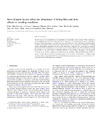Identificador persistente para citar o vincular este elemento:
https://accedacris.ulpgc.es/jspui/handle/10553/76224
| Campo DC | Valor | idioma |
|---|---|---|
| dc.contributor.author | Martínez-de la Puente, Josué | en_US |
| dc.contributor.author | Merino, Santiago | en_US |
| dc.contributor.author | Lobato, Elisa | en_US |
| dc.contributor.author | Rivero-de Aguilar, Juan | en_US |
| dc.contributor.author | del Cerro, Sara | en_US |
| dc.contributor.author | Ruiz-de-Castañeda, Rafael | en_US |
| dc.contributor.author | Moreno, Juan | en_US |
| dc.date.accessioned | 2020-12-02T11:54:58Z | - |
| dc.date.available | 2020-12-02T11:54:58Z | - |
| dc.date.issued | 2010 | en_US |
| dc.identifier.issn | 1146-609X | en_US |
| dc.identifier.other | WoS | - |
| dc.identifier.uri | https://accedacris.ulpgc.es/handle/10553/76224 | - |
| dc.description.abstract | The first step in the establishment of a host-biting fly relationship is host location. While a number of studies highlight the role of host emitted products as important cues affecting host location by biting flies, the role of host temperature is far from clear. We investigated the role of different nest microclimatic variables affecting the interaction between pied flycatchers and two biting flies: black flies and biting midges. Biting midge abundances increased with temperature inside the nest, supporting the potential importance of nest temperature as a cue used by insects to localize their hosts. The possibility that biting fly infestations were associated to ecological conditions in the vicinity of the nests is also discussed. Furthermore, we found a negative association between nestling weight (including tarsus length as a covariate in the analyses) and the interaction between the abundance of biting midges and the presence/absence of black flies in nests. The potential negative effect of these ectoparasites on nestling weight (condition index) and potential differences in the bird phenotypic/genetic quality associated with nest site choice and parasite infestations are considered. | en_US |
| dc.language | eng | en_US |
| dc.relation.ispartof | Acta Oecologica | en_US |
| dc.source | Acta Oecologica [ISSN 1146-609X], v. 36 (6), p. 543-547, (Noviembre-Diciembre 2010) | en_US |
| dc.subject | 3109 Ciencias veterinarias | en_US |
| dc.subject.other | Biting Midge Culicoides | en_US |
| dc.subject.other | Black Flies | en_US |
| dc.subject.other | Ficedula Hypoleuca | en_US |
| dc.subject.other | Host-Parasite Interactions | en_US |
| dc.subject.other | Temperature | en_US |
| dc.subject.other | Vectors | en_US |
| dc.title | Nest-climatic factors affect the abundance of biting flies and their effects on nestling condition | en_US |
| dc.type | info:eu-repo/semantics/Article | en_US |
| dc.type | Article | en_US |
| dc.identifier.doi | 10.1016/j.actao.2010.07.008 | en_US |
| dc.identifier.isi | 000285772700004 | - |
| dc.identifier.eissn | 1873-6238 | - |
| dc.description.lastpage | 547 | en_US |
| dc.identifier.issue | 6 | - |
| dc.description.firstpage | 543 | en_US |
| dc.relation.volume | 36 | en_US |
| dc.investigacion | Ciencias de la Salud | en_US |
| dc.type2 | Artículo | en_US |
| dc.contributor.daisngid | 695559 | - |
| dc.contributor.daisngid | 131454 | - |
| dc.contributor.daisngid | 858085 | - |
| dc.contributor.daisngid | 2941571 | - |
| dc.contributor.daisngid | 4132732 | - |
| dc.contributor.daisngid | 1803227 | - |
| dc.contributor.daisngid | 31771373 | - |
| dc.description.numberofpages | 5 | en_US |
| dc.utils.revision | Sí | en_US |
| dc.contributor.wosstandard | WOS:Martinez-de la Puente, J | - |
| dc.contributor.wosstandard | WOS:Merino, S | - |
| dc.contributor.wosstandard | WOS:Lobato, E | - |
| dc.contributor.wosstandard | WOS:Rivero-de Aguilar, J | - |
| dc.contributor.wosstandard | WOS:del Cerro, S | - |
| dc.contributor.wosstandard | WOS:Ruiz-de-Castaneda, R | - |
| dc.contributor.wosstandard | WOS:Moreno, J | - |
| dc.date.coverdate | Noviembre-Diciembre 2010 | en_US |
| dc.identifier.ulpgc | Sí | en_US |
| dc.description.jcr | 1,46 | |
| dc.description.jcrq | Q3 | |
| dc.description.scie | SCIE | |
| item.fulltext | Con texto completo | - |
| item.grantfulltext | open | - |
| Colección: | Artículos | |
Citas de WEB OF SCIENCETM
Citations
40
actualizado el 08-jun-2025
Visitas
132
actualizado el 25-ene-2025
Descargas
198
actualizado el 25-ene-2025
Google ScholarTM
Verifica
Altmetric
Comparte
Exporta metadatos
Los elementos en ULPGC accedaCRIS están protegidos por derechos de autor con todos los derechos reservados, a menos que se indique lo contrario.
